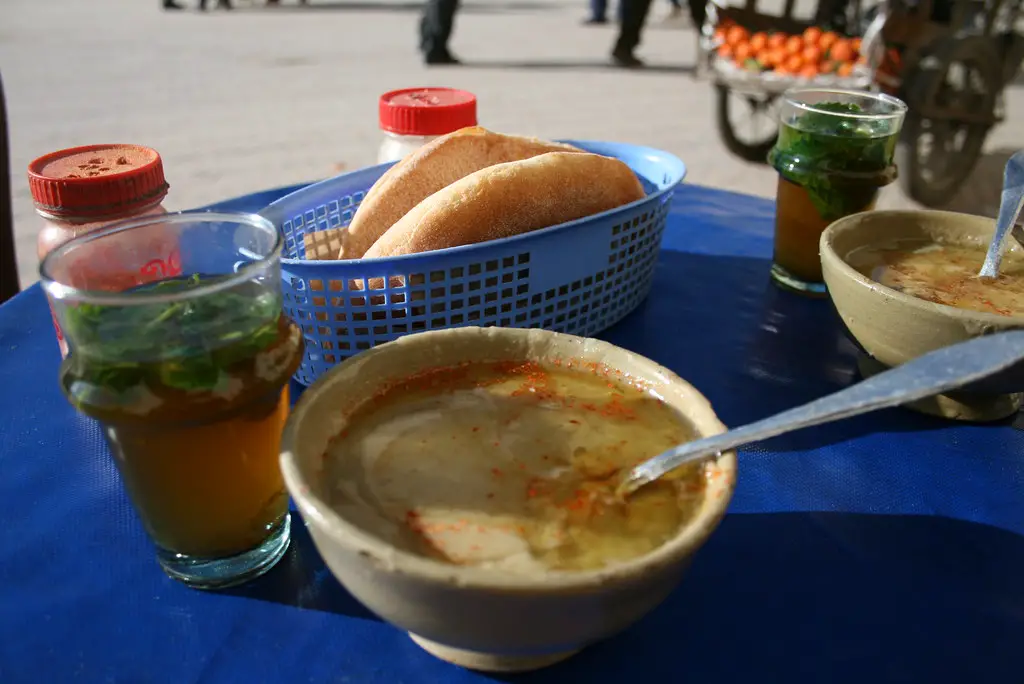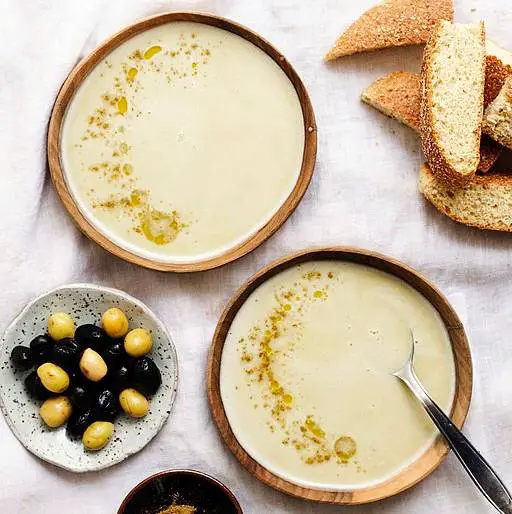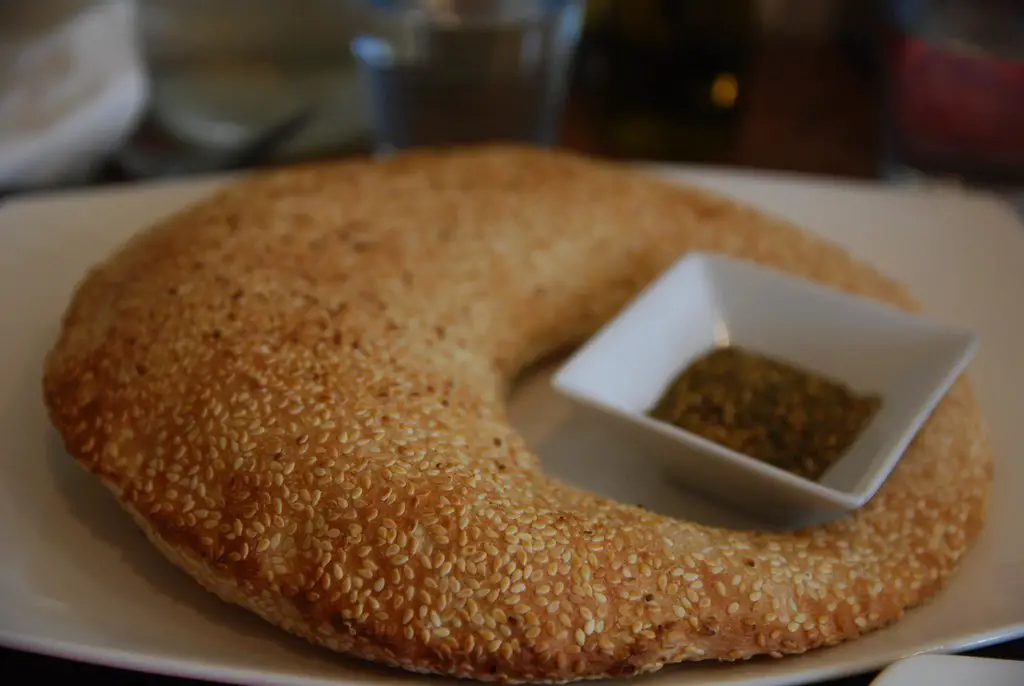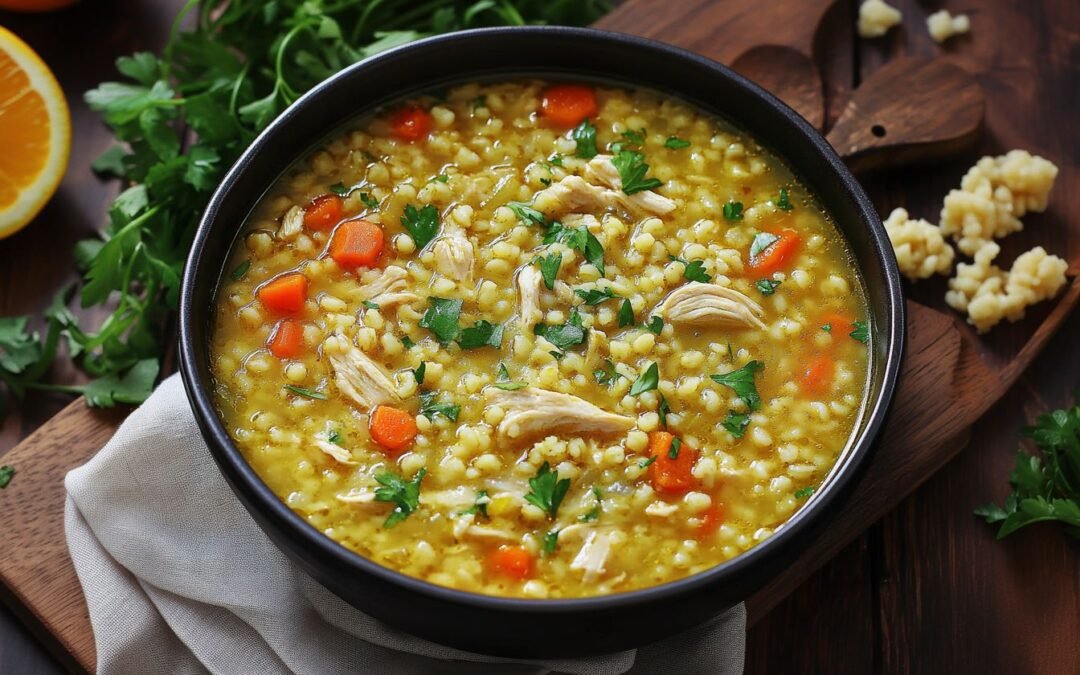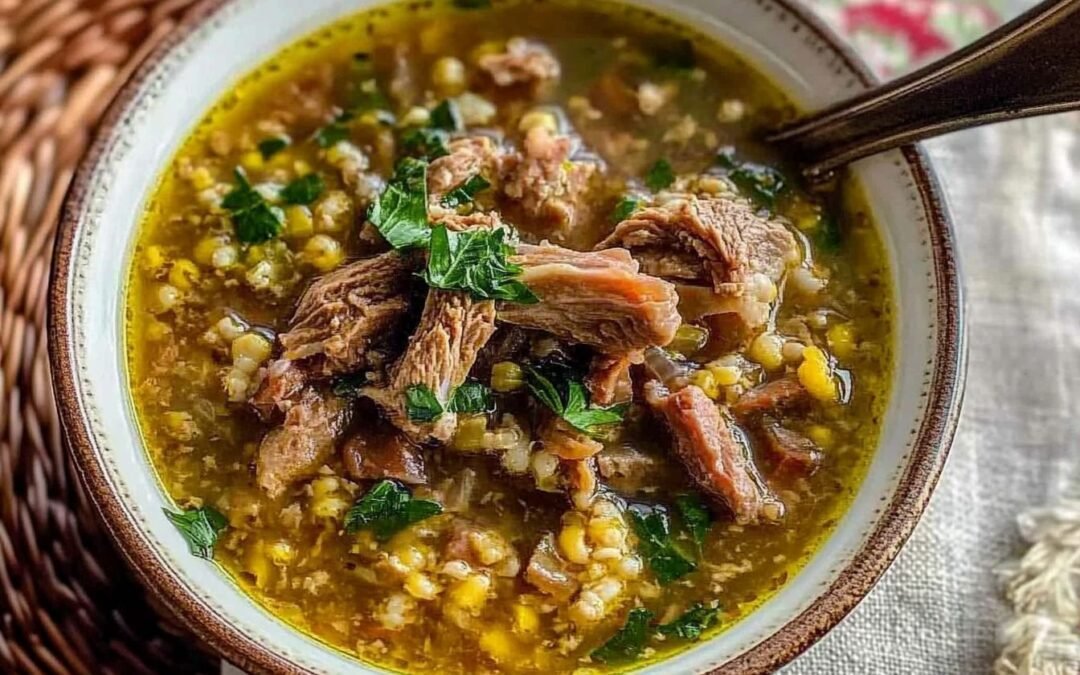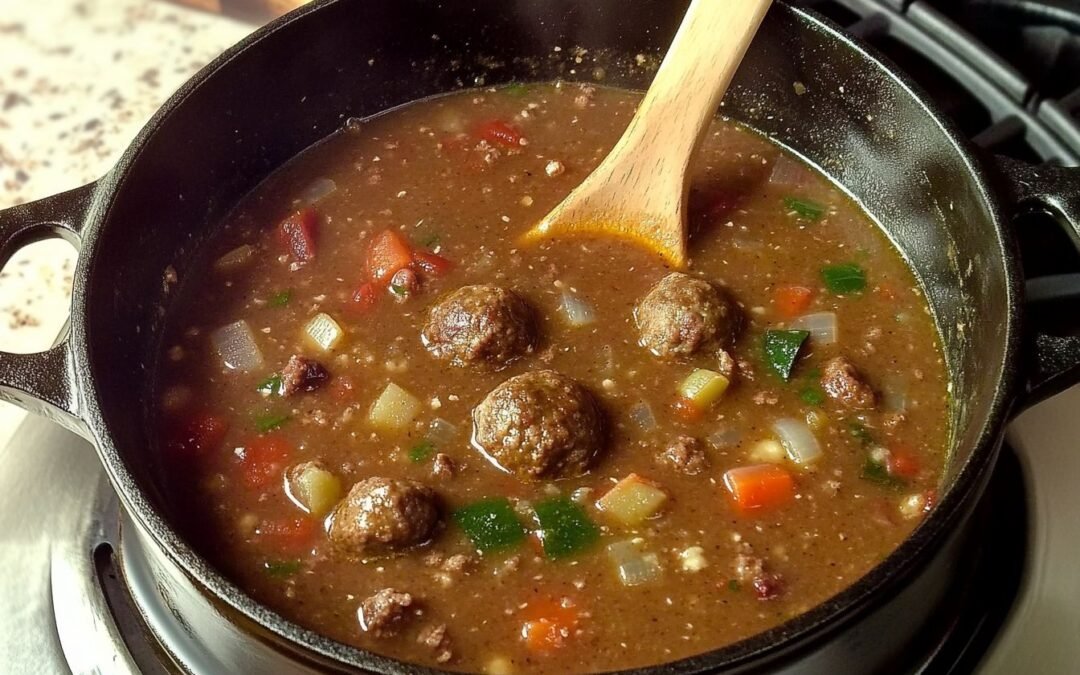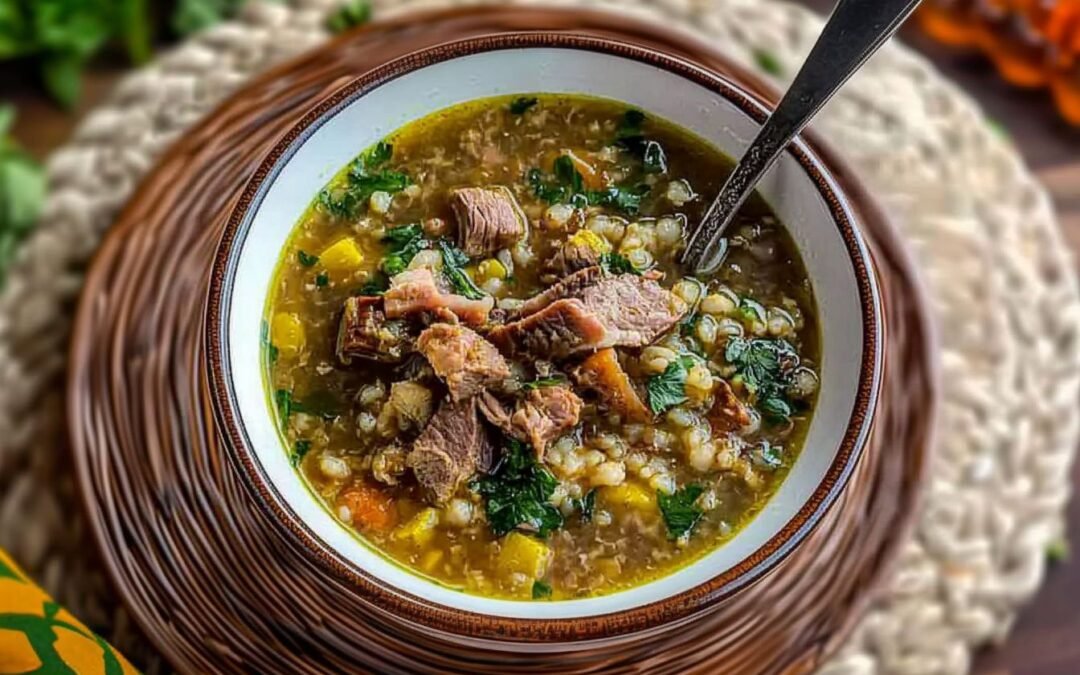Moroccan cuisine is a vibrant and flavorful fusion of North African, Mediterranean, and Middle Eastern influences. One dish that stands out, in particular, is Moroccan bissara, a hearty soup made from split fava beans and a variety of aromatic spices. As someone who has had the pleasure of experiencing the deliciousness of bissara firsthand, I can attest to its ability to warm the soul and satisfy the appetite.
Bissara has a rich history in Moroccan cuisine, dating back centuries to when it was a staple food for the country’s working class. Today, it remains a beloved dish that can be found in restaurants and households throughout Morocco. Despite its humble origins, bissara has gained popularity among food enthusiasts around the world for its unique combination of flavors and textures. From the creamy consistency of the soup to the bold flavors of cumin and garlic, bissara is a true culinary delight.
I had the pleasure of trying Moroccan bissara during a lunch outing with my boss at a Moroccan restaurant in Manhattan. As I perused the menu, my eyes were drawn to the soup section and I decided to order the bissara.
A few minutes later, a young and friendly waitress brought the soup to our table. The aroma was inviting and the taste was even better. The soup was creamy and flavorful, with a hint of spice and a smooth texture. I knew right then that I had to get the recipe.
After finishing our lunch, I approached the restaurant chef and asked if he could share the recipe with me. At first, he was hesitant, but after some friendly conversation, he eventually agreed to give me the ingredients.
Here are the ingredients I received from the chef: dry fava beans, dry split peas, cumin, paprika, turmeric powder, olive oil, garlic, and salt. With these simple ingredients, the chef created a delicious and satisfying soup that left a lasting impression on me.
Common Pairings
When it comes to bissara, many dishes pair well with it. As someone who has enjoyed this soup many times, I have found that certain dishes complement its flavors and textures quite well.
Here are a few of my favorite pairings:
- Bread: A warm, crusty bread is the perfect accompaniment to bissara. Not only does it help to soak up the soup, but it also adds a nice contrast in texture.
- Olives: Moroccan olives are a staple in many dishes. The salty, briny flavor of the olives pairs well with the earthy, savory flavors of the soup.
- Harissa: This spicy North African condiment is a great addition to this soup. It adds a nice kick of heat and a depth of flavor that complements the soup nicely.
- Lamb: While not a traditional pairing, I have found that lamb goes quite well with bissara. The tender, savory meat pairs well with the earthy flavors of the soup.
Ingredients:
- 1 cup of dry fava beans
- 1 cup of dry split peas
- 1 teaspoon of cumin
- 1 teaspoon of paprika
- 1 teaspoon of turmeric powder
- 3 tablespoons of olive oil
- 3 cloves of garlic
- Salt to taste
How to Make Moroccan Bissara?
- First, put dry fava beans and split peas in a big pot. Cover them completely with water. Then, add cumin, paprika, turmeric, salt, and olive oil. Crush garlic cloves with your hand, peel them, and toss them into the pot.
- Get the pot boiling, then cover it up and reduce the heat to medium-low. Leave it to cook for 30-35 minutes until the beans get soft. When they’re done, turn off the heat and let the pot cool for around 10 minutes.
- Next, use a hand blender to make the soup smooth. For a finish, put a bit of olive oil, sprinkle some cumin, and add hot cayenne powder if you like it spicy. Serve with bread and dig in!
Nutritional Value
As a traditional Moroccan soup, bissara is a nutritious and healthy meal that can provide a variety of health benefits. Here are some of the nutritional values of bissara:
High in Fiber
Bissara is an excellent source of dietary fiber, which can help promote digestive health and prevent constipation. One serving of bissara can provide up to 10 grams of fiber, which is about 40% of the recommended daily intake.
Rich in Protein
Bissara is also a good source of protein, which is essential for building and repairing tissues in the body. One serving of bissara can provide up to 15 grams of protein, which is about 30% of the recommended daily intake.
Low in Fat
Bissara is a low-fat soup, which makes it a healthy option for those who are watching their fat intake. One serving of bissara contains only 2 grams of fat, which is less than 5% of the recommended daily intake.
Packed with Vitamins and Minerals
Bissara is loaded with essential vitamins and minerals, including iron, magnesium, phosphorus, and vitamin C. These nutrients can help boost the immune system, improve bone health, and reduce the risk of chronic diseases.
In conclusion, bissara is a healthy and nutritious soup that can provide a variety of health benefits. It is high in fiber, rich in protein, low in fat, and packed with essential vitamins and minerals. So, if you are looking for a healthy and delicious meal, try bissara today!
Regional Variations
In the northern region of Morocco, bissara is often made with fava beans instead of split peas. The soup is also typically thicker and creamier, with a consistency similar to hummus. It is commonly served with a drizzle of olive oil and a sprinkle of cumin.
In the central region of Morocco, bissara is made with split peas and often includes additional ingredients such as garlic, onions, and tomatoes. The soup is usually thinner and more broth-like than the northern version. It is commonly served with a side of crusty bread.
In the southern region of Morocco, bissara is often made with chickpeas instead of split peas. The soup is typically spicier than other variations, with the addition of hot peppers or harissa. It is commonly served with a sprinkle of paprika and a slice of lemon.
Tips and Tricks
As someone who has made Moroccan bissara multiple times, I have learned a few tips and tricks that can make your experience with this delicious soup even better.
Use High-Quality Dried Fava Beans
Using high-quality dried fava beans is crucial for a flavorful bissara. Look for clean beans, free of debris, and have a uniform size. Letting the beans soak overnight before cooking can make them cook faster and easier on your stomach.
Add More Water if Necessary
The amount of water you add to your bissara will depend on the consistency you prefer. If you like a thinner soup, add more water during the cooking process. Keep in mind that the soup will thicken as it cools, so you may need to add more water when reheating leftovers.
Experiment with Spices
While cumin and paprika are traditional spices used in bissara, don’t be afraid to experiment with other spices to suit your taste. Some options include coriander, turmeric, and chili powder. You can also add fresh herbs like parsley or cilantro for a burst of freshness.
Serve with Crusty Bread
Bissara is traditionally served with crusty bread, and for good reason. The bread is perfect for dipping into the soup and soaking up all the flavors. If you can, opt for sourdough or whole-grain bread for added texture and flavor.
By following these tips and tricks, you’ll be able to make a delicious and satisfying bowl of Moroccan bissara every time.
Conclusion
As I wrap up my exploration of Moroccan bissara, I am left with a feeling of satisfaction and contentment. I have discovered that this humble soup is not only delicious but also packed with nutrients that are essential for a healthy diet.
One of the things that I appreciate about bissara is its versatility. It can be enjoyed as a main dish or as a side dish, depending on the occasion. It can also be customized to suit different tastes by adding spices such as cumin, paprika, or coriander.
In conclusion, I highly recommend trying it if you haven’t already. It is a healthy and flavorful soup that is easy to prepare and perfect for any occasion. So, next time you’re looking for a comforting and nourishing meal, give this soup a try. You won’t be disappointed!
As mentioned above, bread pairs with this soup perfectly.
Here is a recipe for a delicious bread (click the image below):
Shop the ingredients on Amazon
